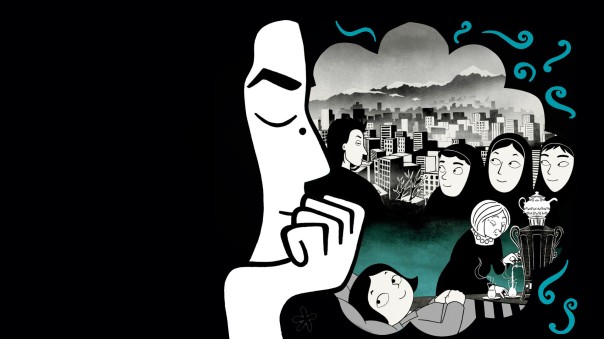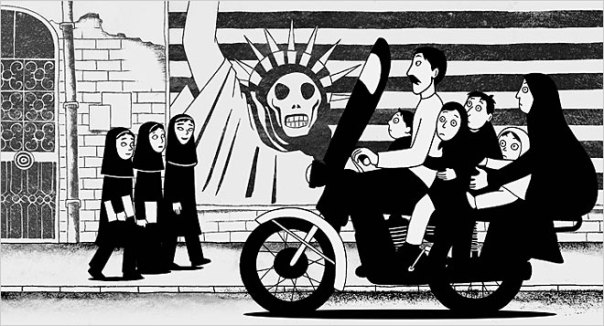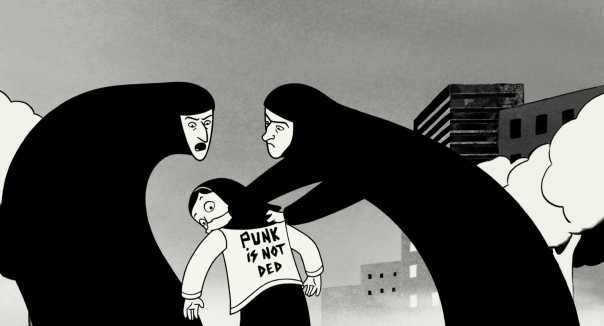The history of Iran has been a rocky one ever since 1953, when CIA-MI6 orchestrated coup toppled the democratically elected Prime Minister. What followed was 26 years of rule by the Shah of Iran, under brutal repression using his secret police, the SAVAK. Things eventually reached a tipping point in 1979 with the Iranian Revolution ousting the Shah and Ayatollah Khomeini coming to power, leading to the establishment of the Islamic Republic of Iran with strict adherence to an orthodox and extreme interpretation of the Sharia.
Persepolis is a graphic novel, and is the autobiography of Marjane Satrapi who grew up during the years of the Shah, the revolution and the Islamic Republic. It looks at the world through her eyes, and the drastic differences in her life in each time period.
She also directed the movie that was adapted from the book, released in 2007, which is in the form of an animated film. It won several awards around the world, including the Jury Prize at the Cannes film festival, and was nominated for the Oscar for Best Animated Feature.
A story that has been adapted perfectly in two different formats, Persepolis is one of the most powerful books in recent years. While newspaper reports are quick to report the tensions between Iran and the West, there are very few instances of the life of the Iranian people being made available to the world, which the story of Satrapi succeeds in putting across.
It is when the book covers her formative years in Iran that we understand the true state of affairs in the country, with her adolescent streak of rebellion often coming close to landing her in trouble.
Secretly buying Western heavy metal music, notably Iron Maiden, on the black market, wearing unorthodox clothing such as a denim jacket, celebrating punk rock and other Western music sensations like Michael Jackson, and openly rebutting a teacher’s lies about the abuses of the government. Worrying her parents, she is sent to Austria where she can practice the freedom to express herself.
This is the second aspect of the book that strikes a chord with many people, that of cultural shock and alienation in a foreign land, in this case exacerbated by her disdain for people who take their freedom for granted.
She then returns to Iran, and talks more about the ways in which she would rebel against the stupidest of rules in the country, often putting her liberty at stake.
A moving plot, about an admirable woman with stern resolve, it is a message for everybody to stand up for what they believe in, and that no excuse should keep somebody from doing what they really want to do.
“The individual has always had to struggle to keep from being overwhelmed by the tribe. If you try it, you will be lonely often, and sometimes frightened. But no price is too high to pay for the privilege of owning yourself.” – Nietzsche



